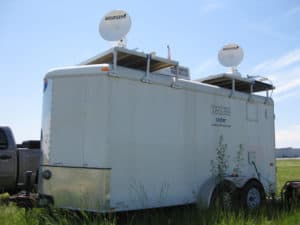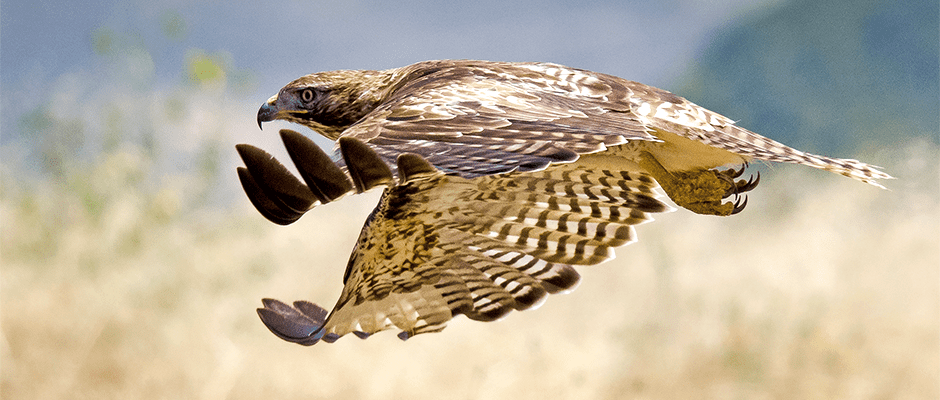Share this article
WSB: Airport’s avian radar spots just 15 percent of birds
Airports don’t just use radar to keep a watch out for airplanes coming and going. Some also use it to look out for birds, which pose a collision hazard for air traffic. But how well does radar work for spotting birds?
In a study published in the Wildlife Society Bulletin, researchers from USDA Wildlife Services and the University of Illinois collaborated to see how well the three avian radar systems used by O’Hare International Airport outside Chicago performed.
Comparing on-the-ground observations with radar data, the team found that the radar sensors tracked just 15 percent of the birds or flocks of birds that researchers spotted from the airfield. Birds that were larger, closer and flying higher were more likely to be tracked.

This trailer houses two of the three avian radar systems used to monitor birds at Chicago’s O’Hare International Airport. ©University of Illinois
“We were surprised when we got the results,” said TWS member Brian Washburn, a research wildlife biologist at Wildlife Services’ National Wildlife Research Center field station in Sandusky, Ohio.
Bird strikes pose a significant safety and economic threat to commercial aircraft. Researchers say annual economic losses exceed $690 million in the United States and $1.2 billion worldwide. But few studies had considered how well radar systems deployed to detect birds at airports worked, they said.
Using technicians already at work trying to deter birds from the airport, Wildlife Services had them record the birds they saw, then compared those observations with radar data.
Of the 972 birds or flocks that researchers spotted, the team found, radar picked up only 143. All were within 4.8 kilometers of the radar systems. That may make radar less feasible for long-range detection, Washburn said, but it could help monitor problem spots. “Is there a habitat you feel you could monitor with this tool? Is there an area where, say, gulls are moving from a landfill to a lake in a consistent pattern?”
Radar may also prove more helpful in rural locations, such as wind farms, he said, where “ground clutter,” the buzz of activity at a busy airport like O’Hare, is more subdued.
Following up on the study, Washburn and his colleagues placed transmitters on red-tailed hawks (Buteo jamaicensis), one of the most frequently detected birds, to try to more accurately compare bird occurrences. That study, which hasn’t been published yet, came up with similar findings, Washburn said.
“We’re trying to not look at it as good or bad, yes or no,” he said. “That would be up to the airport. Is it going to meet their needs for detecting hazardous wildlife?”
Header Image: Red-tailed hawks are among the most common birds seen at O’Hare International Airport. ©Steve Corey








